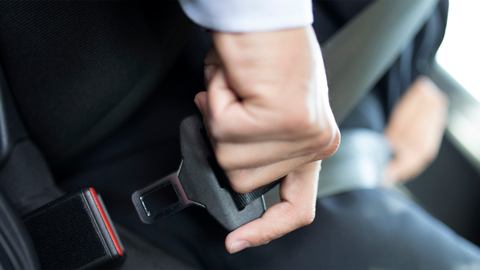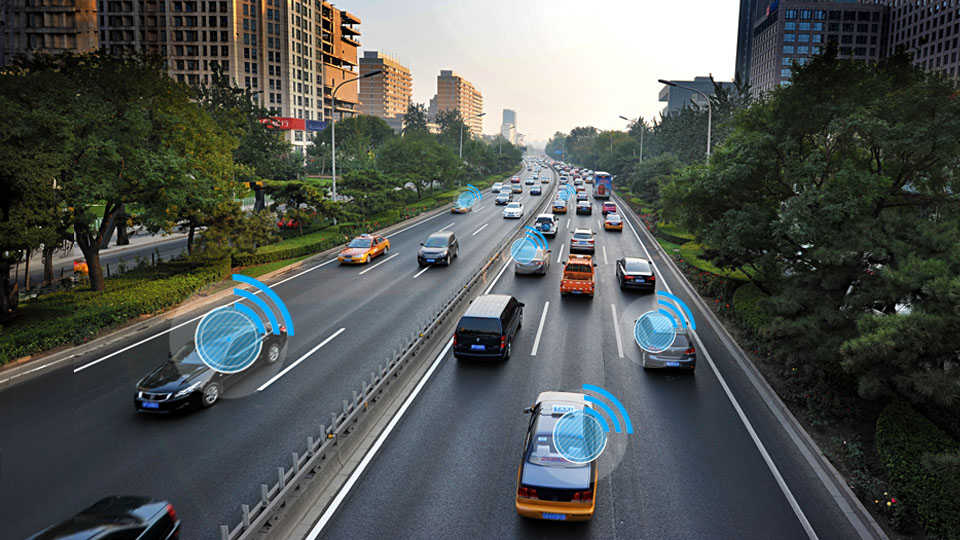A risk level comparison of LGV drivers versus HGV drivers
Introduction of new European Mobility Packages to support safer road transport — A risk level comparison of LGV drivers versus HGV drivers.

Europe employs nearly 11 million people in the commercial road transport sector. The freight transport accounts for nearly half and is expected to grow by more than 60% in 2050 while the passenger sector is expected to grow by 42%. For increasing safety, supporting social fairness, fair competition, improving the environmental performance and encouraging innovation, the European Commission has come up with 3 regulatory packages they refer to as "The Mobility Packages 1,2,3".
On the 9th of July 2020 the European Parliament passed Mobility Package 1 which will include light goods vehicles (LGV) in the scope of Regulation (EC) No 561/2006. Commercials affected by the new regulation are vehicles whose maximum authorised weight, including trailers or semi-trailers, exceeds 2.5 tonnes and which are used for international freight or cabotage operations only. The regulation will become effective from the first of July 2026.
While heavy goods vehicles (HGV) need to follow strict regulations that include driving time and rest period regulations, light goods vehicles did not before the introduction of the Mobility Package 1. The change will impact many companies that need to implement tachograph solutions in their LGV fleet. This raises the question if telematics data indicates similar risk levels for light goods vehicles and heavy goods vehicles to support the change in regulation.
A European parliament published report states that fatigue as a whole was similar for LGV drivers and HGV drivers but for LGVs it was even more common for the fatigue to have occurred without exceeding the regulated hours limits.
Geotab as a company supports any endeavour to make our roads a safer place. One initiative Geotab has recently joined is the SRTI Ecosystem "Data for Road Safety". Aggregated telematics data helps measure key factors indicating road safety to better understand its dependencies and change over time.
To better interpret the risk level of HGV and LGV drivers, the following questions will be investigated:
- What circumstances result in unsafe driving? And which of those can be measured through Geotab's telematics data?
- Which vehicle group shows higher risk levels by factors defined through the first question?
- Could new regulations as they are stated for LGVs show a positive impact to safer road transport based on the outcome in the previous questions?
Starting with the first question, risk when driving can be defined as the chance of damage, injury or some form of loss. Different factors contribute to the level of risk that include three areas: Driver, vehicle and vehicle environment. For the following analysis, the risk level will be compared based solely on the driver's ability. A well rested driver with the ability to respond quickly to changing conditions will have a lower risk level compared to a tired driver being in general slow to changing conditions.
Factors that can be measured thanks to telematics data include
- Driving time through GPS and OBD signals
- Break time through GPS and OBD signals
- Harsh events through accelerometer data
- Speeding through GPS and OBD signals
- Collisions through Accelerometer data and OBD signals
The following analysis focuses on driving time and harsh events. Two aggregated datasets are being leveraged containing trip information and the number of harsh events by trip. The pool of HGVs and LGVs used consists of 22 thousand vehicles, 9 makes and 45 models. Over a span of one year, 8 million trips have been tracked with 27 million harsh events.
The diagram below shows the distribution of driving time in minutes per trip. Blue indicates the HGV group and red indicates the LGV group.
The distribution indicates that HGVs have in general a longer journey than LGVs. What is not visible on this graph is the portion of trips that get close to 4.5 hours. The tachograph rules on breaks indicate that after every 4.5 hours of driving time, the driver should have at least 45 minutes of breaks. Focusing on the distribution portion with trips above 3 hours we get the following diagram.
We notice that for HGVs the diagram indicates a significantly higher portion of journeys close to 4.5 hours. The sudden drop around 280 minutes for the HGV group indicates the impact of the regulation. LGVs on the other hand do not show the same pattern. The extended trips close to 4.5 hours are more present around HGVs which result in a higher risk level for the vehicle group.
The following diagram shows the trip duration distribution per driving day and vehicle type close to the 9 and 10 hour limit for HGVs.
Also here we notice the amount of HGVs driving up to the limit of 9 and 10 hours for a single day. Another indication of higher risk levels for HGVs.
Does this now mean HGV drivers are in general more affected by higher risk levels than LGV drivers? There are other factors that clearly show fatigue is not only related to time spent on the road but also linked to the environment. Looking at the harsh events produced by each vehicle type, we notice clear differences.
For the following dataset on harsh events, the accelerometer threshold determining the event has been normalised to the vehicle type. The parameters for normalisation have been empirically verified using our GO device in different test scenarios. Those thresholds can be seen in the MyGeotab platform under the rules section.
The diagram below shows the average amount of collected events per driving hour. The different types are shortened by hard acceleration (HA), harsh braking (HB) and harsh cornering (HC).
Harsh acceleration events appear almost two times as often for LGVs followed by harsh cornering events with approx. 54% higher likelihood for LGVs. Lastly, harsh braking events occur approx. 33% more likely for LGVs.
In general LGVs are exposed to 54% higher risk taking all events into account not separating by category. This goes into the same direction as the European parliament report states in the introduction. Although driving time as a risk factor appears in general less likely for LGV drivers, fatigue can occur earlier through a more stressful driving environment.
To answer the last question, we can conclude that having the combination of LGV drivers which experience higher risk and a driving time that is not regulated is more likely to result in the chance of damage, injury or some form of loss. If two similar trips of 4.5 hours are driven by an HGV driver and LGV driver, the LGV driver will experience a 54% higher risk. The regulation helps to reduce the risk for the group that is already at a higher risk. What it does not consider is that LGVs driving over 4.5 hours straight inside the country for commercial purposes would still be allowed to continue while being exposed to a significantly higher risk.
While driving duration captured on tachographs can only approximate risk levels, telematics data with harsh event detection gives a clear snapshot of the current risk. Companies investing into advanced fatigue detection through telematics data and driver facing cameras will help to make our roads a safer place by protecting the driver and their operating environment.
Learn more about Geotab's solutions to improve safety by analysing drivers' behaviour in MyGeotab or by using driver safety scorecards and how safety meetings with your drivers can contribute to safer driving.
Subscribe to the Geotab Blog
The Europe Team writes about fleet news in Europe.
Subscribe to the Geotab Blog
Related posts

.jpeg)




